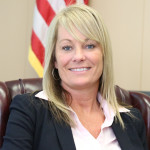An initiative to move away from traditional academic schedules toward a mastery-based system of education dominated House and Senate education committee meetings Wednesday.

Superintendent of Public Instruction Sherri Ybarra, teachers from Kuna Middle School and officials from the Council of Chief State School Officers briefed lawmakers, highlighting the mastery-based education recommendation issued in 2013 by Gov. Butch Otter’s Task Force for Improving Education.
Ybarra said she intended to help lawmakers “move from the notion or the concept of mastery-based education to the actual concrete view of what it could look like in Idaho. “
The idea behind mastery is that students would advance academically once they demonstrate a thorough understanding of educational concepts, said Stephen Bowen, the CCSSO’s strategic initiative director for innovation.
Such a move would replace seat time requirements, and could allow more students to graduate early or work towards college credits while still in high school if they master concepts early. On the other hand, some students who struggle could theoretically need more than four years to graduate high school.
Some districts and states that moved to mastery replaced traditional letter grades with scores of one to four. A “three” indicates mastery. A “two” indicates students are progressing but have not yet achieved mastery.
“They’ve taken out all seat-time requirements,” Bowen said. “It’s not about did you sit in class long enough to get a C-minus and pass the class. It’s about did you master that (subject area).”
A statewide move to mastery is complex, and could require legal changes to everything from a state’s funding formula to the laws governing diploma requirements, he said. In some mastery-based schools, students of different age groups are found working together within the same classroom.

Kuna Middle School teachers Kevin Murphy and Shelby Harris said they’ve experienced positive results in the two years since their team of four teachers moved to a mastery- and problem-based learning system they call Synergy.
“We give (students) a problem we don’t have the answer to and they have to use elements of math, science, English and history to find the solution,” Murphy said.
Murphy described his team’s classrooms as “a beautiful mess,” where students collaborate (sometimes loudly) in groups, don’t observe traditional bell schedules and view teachers as mentors, not traditional educators who deliver lengthy lectures that consume a class period.
The situation took some getting used to, and some trust, but he said students in the Synergy system outperformed their peers on last year’s ISAT by Smarter Balanced (SBAC) tests.
While mastery offers an opportunity for advanced students to progress more quickly, CCSSO experts said it is equally important to personalize learning opportunities for students who fall behind or struggle.
“One of the most important things when a school moves toward a mastery-based system of education is, if students are working at a different pace, there must be systems of support in place,” said Jennifer Poon, CCSSO’s Innovation Lab Network director.
In a 2015 interview, Ybarra emphasized her support for mastery, but described the transition as a “generational change” that will not be completed during a four-year term in office.
Last week, Otter proposed spending $1.2 million to continue developing mastery in Idaho. That money would allow 20 school districts to begin piloting a mastery system.
